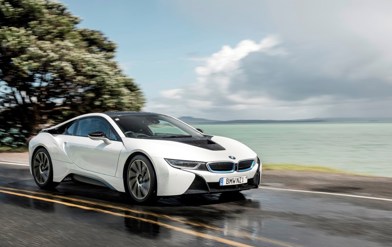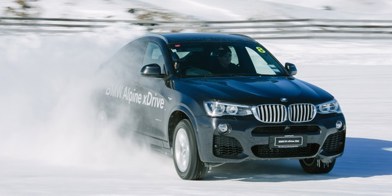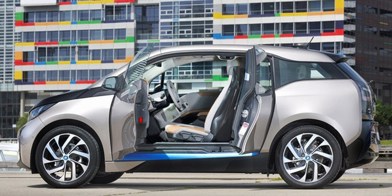The dynamic between Ford’s Focus RS and ST has always been an interesting one.
From the outside it’s looked a little like Ford were placing a buck each way; one car designed to expand the horizons of what a hatchback could do, and the other designed to be more accessible and family friendly.
Despite its overshadowed sibling status, I’ve always preferred the ST at heart, and will argue to the hilt that it’s easily more of a terrifying laugh than its RS cousin. Outgoing models are known for their rampant torque steer and willingness for lift-off oversteer — a far cry from the RS’s serious ‘get in and shut up’ nature.
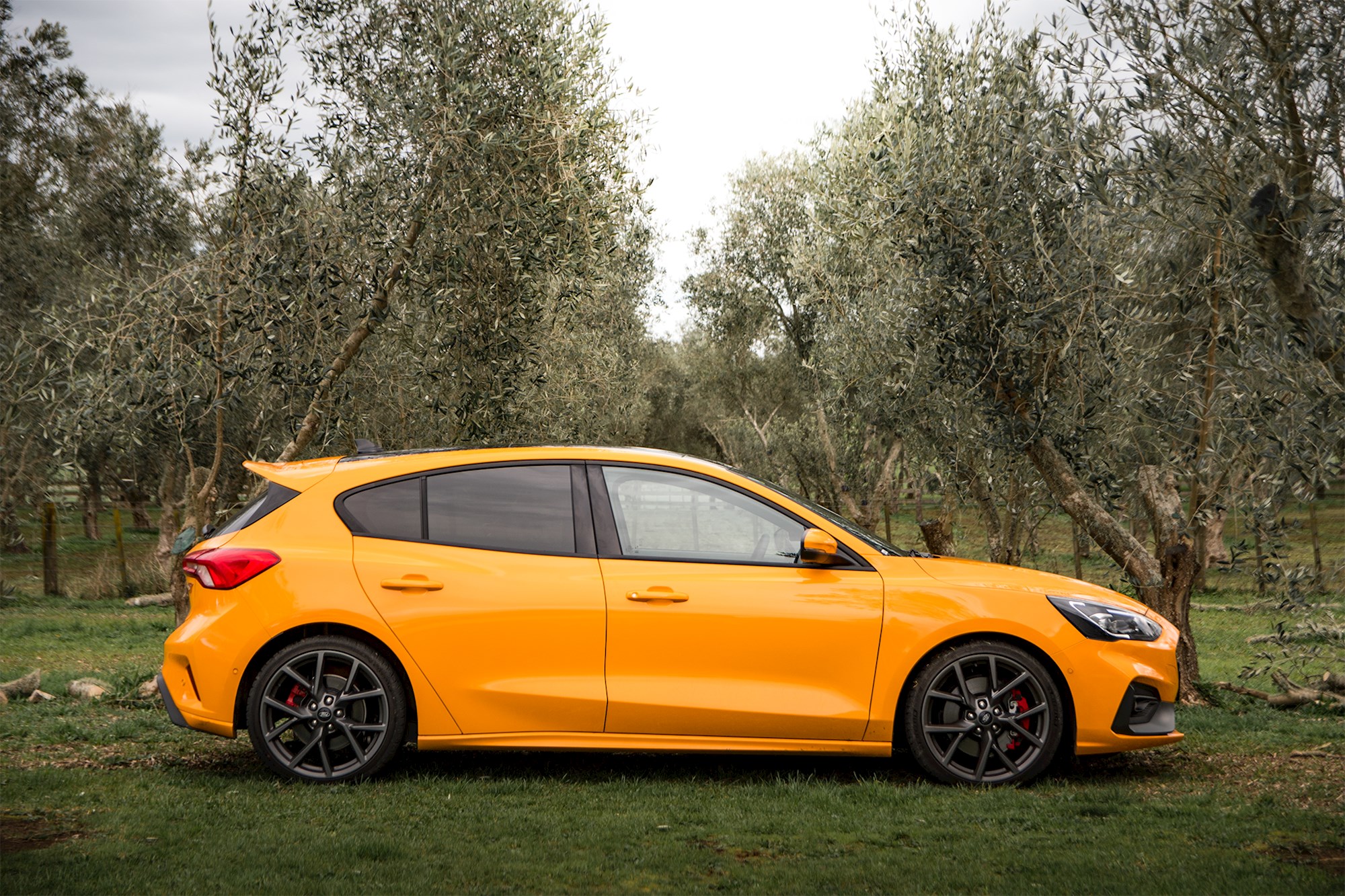
Sadly the RS has been axed, a victim of bean counters and regulators. This means the weight of expectation on the all-new Focus ST has doubled. And there’s a lingering question of which Jekyll or Hyde character we’re going to get; a fun-filled comedy romp, a dark intense thriller, or maybe something in the middle?
Like most sibling rivalries, there are hand-me-downs abound. The Focus ST calls dibs on the RS’s 2.3-litre turbocharged four-cylinder EcoBoost engine. If that sounds familiar, it might be because this is also the same 2.3-litre as you’ll find under the bonnet of the Ford Mustang EcoBoost.
It’s paired with Ford’s wonderful new C2 platform — some 53mm longer in wheelbase, 20 per cent more rigid, and 88kg lighter than the outgoing Focus platform. And, good enough to help the standard Focus earn the AA DRIVEN New Zealand Car of the Year gong last year.
Relative to the RS and Mustang, the ST’s 2.3 is a touch down on power — making 206kW/420Nm to their respective 257kW/440Nm and 224kW/448Nm. But it’s also much cheaper, with a starting price of $59,490.
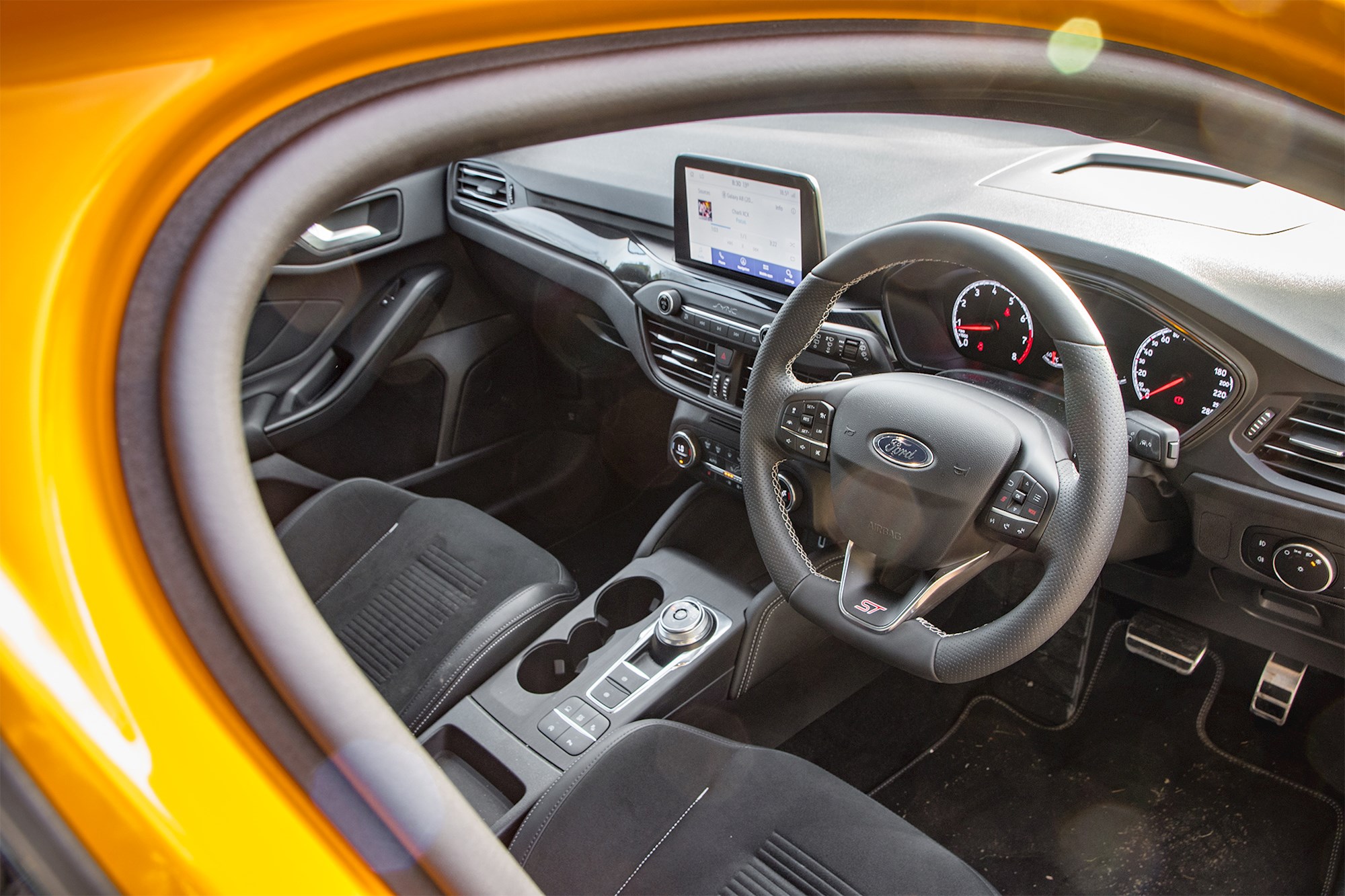
Its price places the Focus ST smack bonk in the middle of an all-out hot hatch war. At just under the critical $60k mark, it’s on top of the Renault Megane RS and Honda Civic Type R, and just behind the cheaper (and yes, slower) Volkswagen Golf GTI and Hyundai i30 N.
Through some of its little details, you can tell the Focus’ initial aim is to be more towards the ‘daily driver’ end of the spectrum than the track-day warrior binary. It looks clean-shaven and mature compared to the bombastic Type R or even the Megane RS.
This is followed by the appearance of features like electric heated seats, somewhat rare to see in this segment. The boot has grown immensely since the last ST, at 375 litres, while its rear seats are among the most commodious in class.
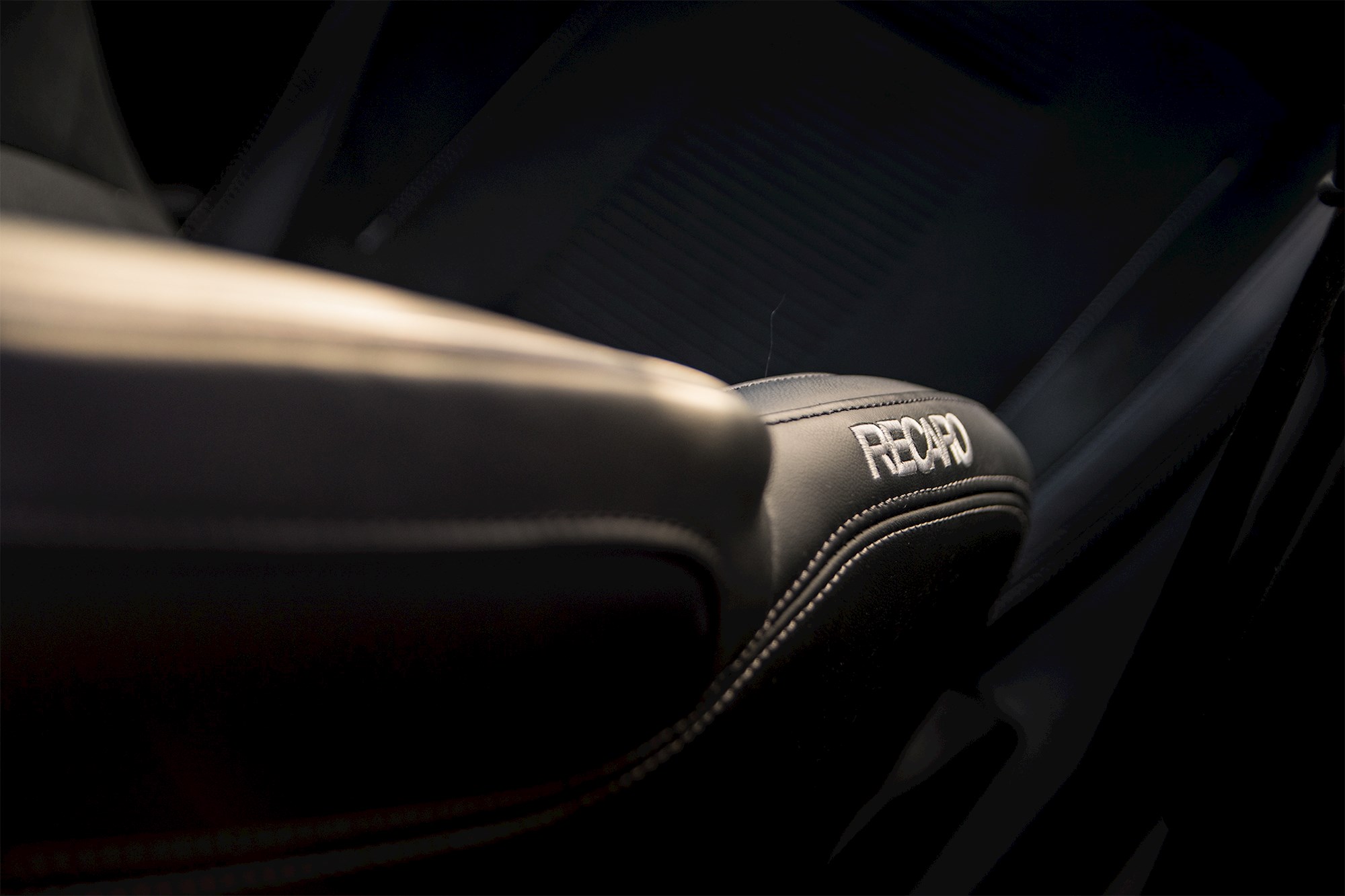
Paying north of 50 grand on a car fundamentally fitted with an economy car’s interior is a perpetual hot hatch blight — the Golf GTI’s wonderful cabin, aside. To this end, the ST is typical.
Behind the above-average equipment and space, the updated SYNC 3 8.0-inch touchscreen, flat-bottomed steering wheel, and Recaro buckets (a little tight and uncomfortable according to DRIVEN writers large and small) is sadly a dark and dreary living space.
It’s undoubtedly a big improvement over the last Focus’ cabin, particularly in regards to ergonomics, but those bench-marking this against a Golf won’t be pleased. An interior shootout between the ST, the Megane RS, and the i30 N, however, is a much more even comparison.
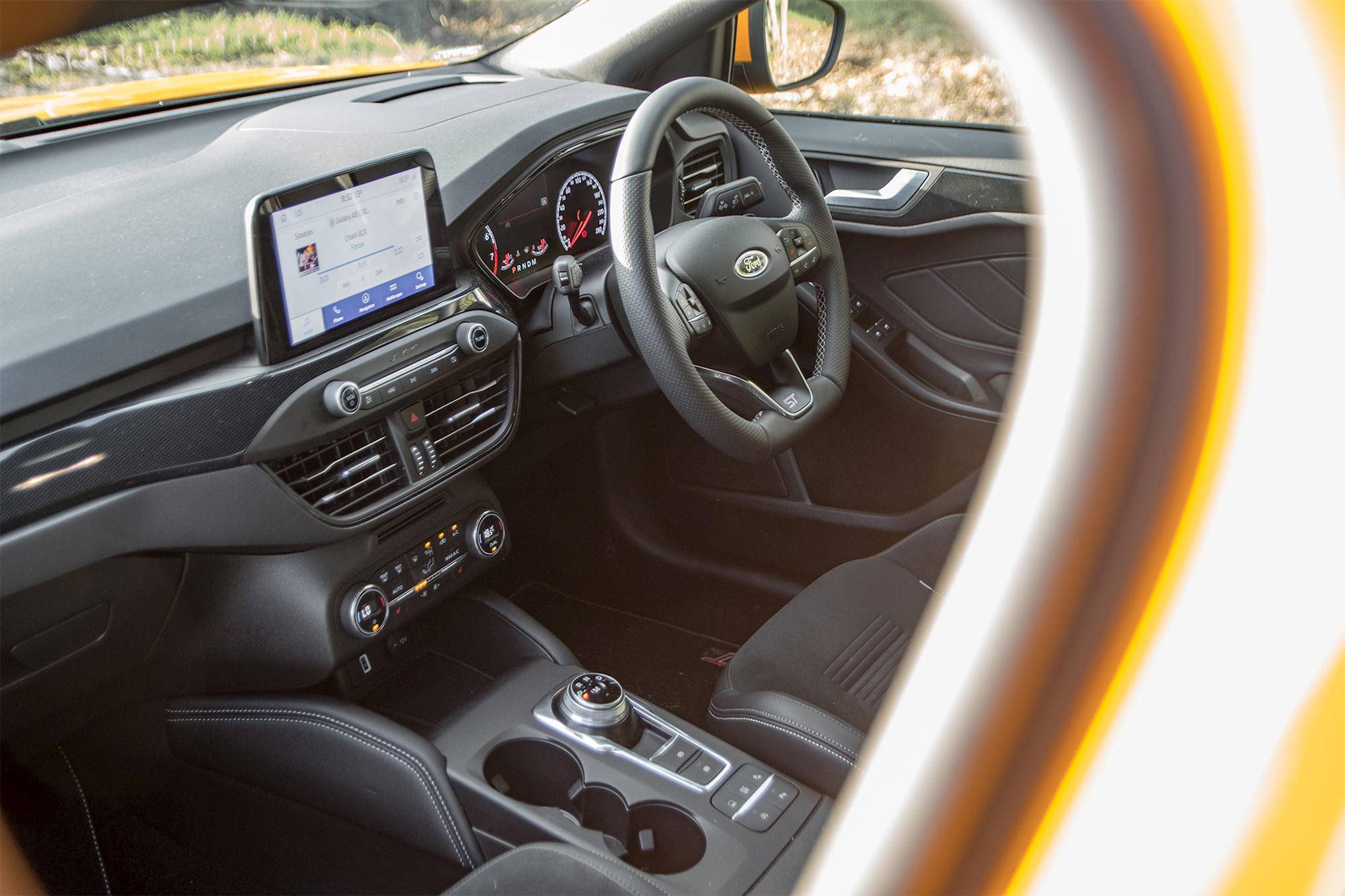
The most interesting element of the ST’s cabin is the gear selector. There’s no traditional gear-knob, you instead get a rotary dial — a carryover from the standard Focus. This gives you a little more room to flail your arms about and awkwardly fumble supersized cups of Fanta into the cup holders, but it’s still oddly hesitant with switching between drive and reverse.
And, it introduces maybe the most controversial element of the Focus ST; the gearbox.
While other markets get the choice of automatic or manual options, New Zealand buyers only get the automatic. It’s a seven-speed paddle-shift torque-converted unit capable of hustling the ST to 100km/h in 5.7 seconds (top speed is limited to 250km/h). That’s two tenths quicker than a more powerful Type R, and naturally quicker than the manual ST, too.
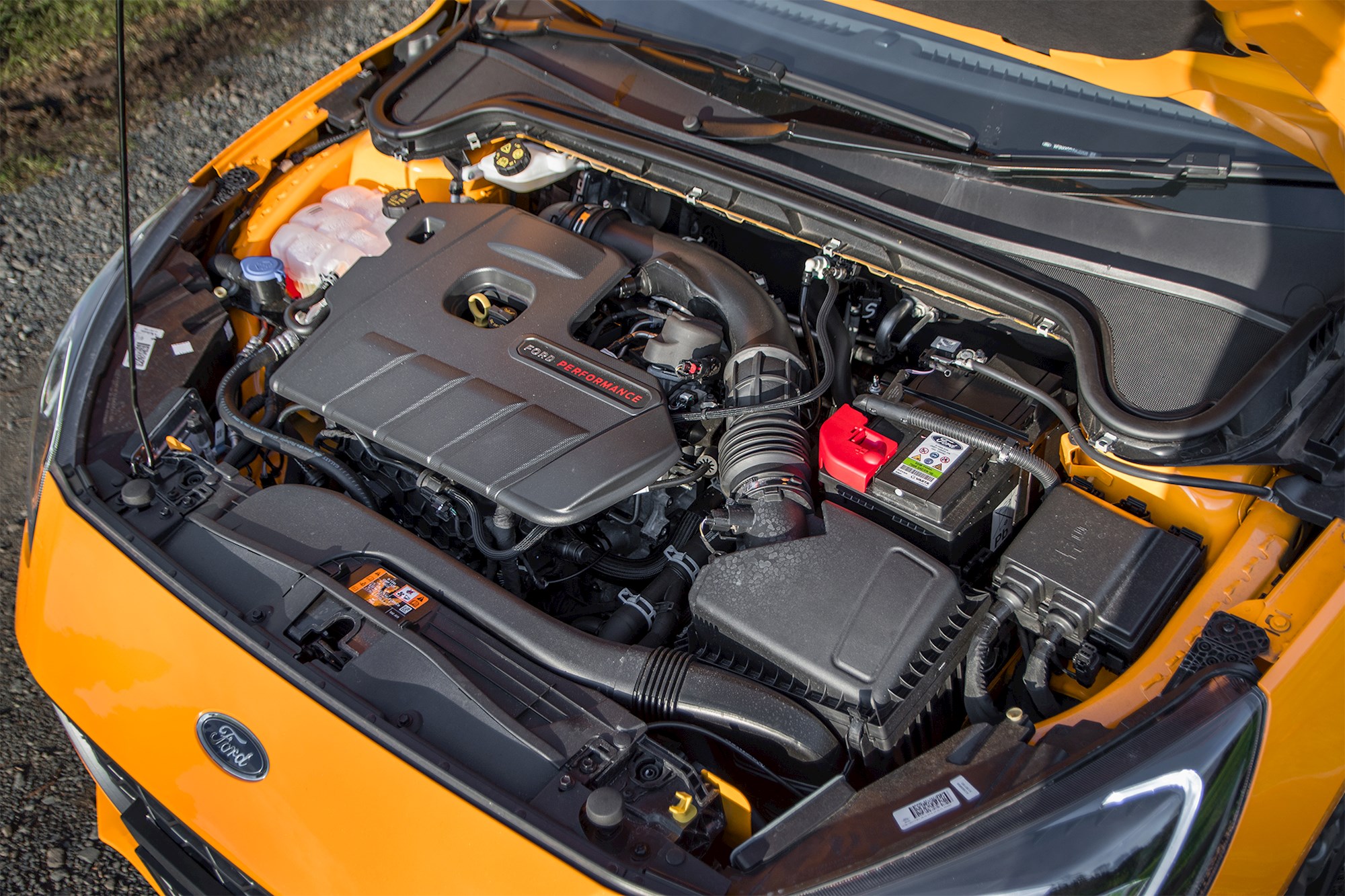
While being available as an automatic gives the Focus ST a wider appeal, it also denies a few core hot hatch principles. Not only can’t drivers feel the satisfaction of rowing through gears at their own will, but it’s worth noting too that the manual ST features a rortier, deeper engine note and a more pronounced array of explosive exhales with each shift.
Not to say the car we’re stuck with isn’t much of a vocalist. The 2.3-litre packs more character than most; from the attractive low rumble at cold idle to the thrumming, almost three-cylinder-like appeal when you’re moving at pace. And yes, the seven-speed works brilliantly most of the time; feeling as quick as a dual-clutch when you’re carving corners and simultaneously smooth in town.
Peak power and torque come at 5500rpm and 3000rpm respectively, so making the most of your revs and committing to redline is actually quite rewarding (lack of occasional backfires, be damned). Ford claims that the ST is actually quicker in the rolling dash from 50km/h to 100km/h than the Focus RS, and it’s certainly believable in practice.
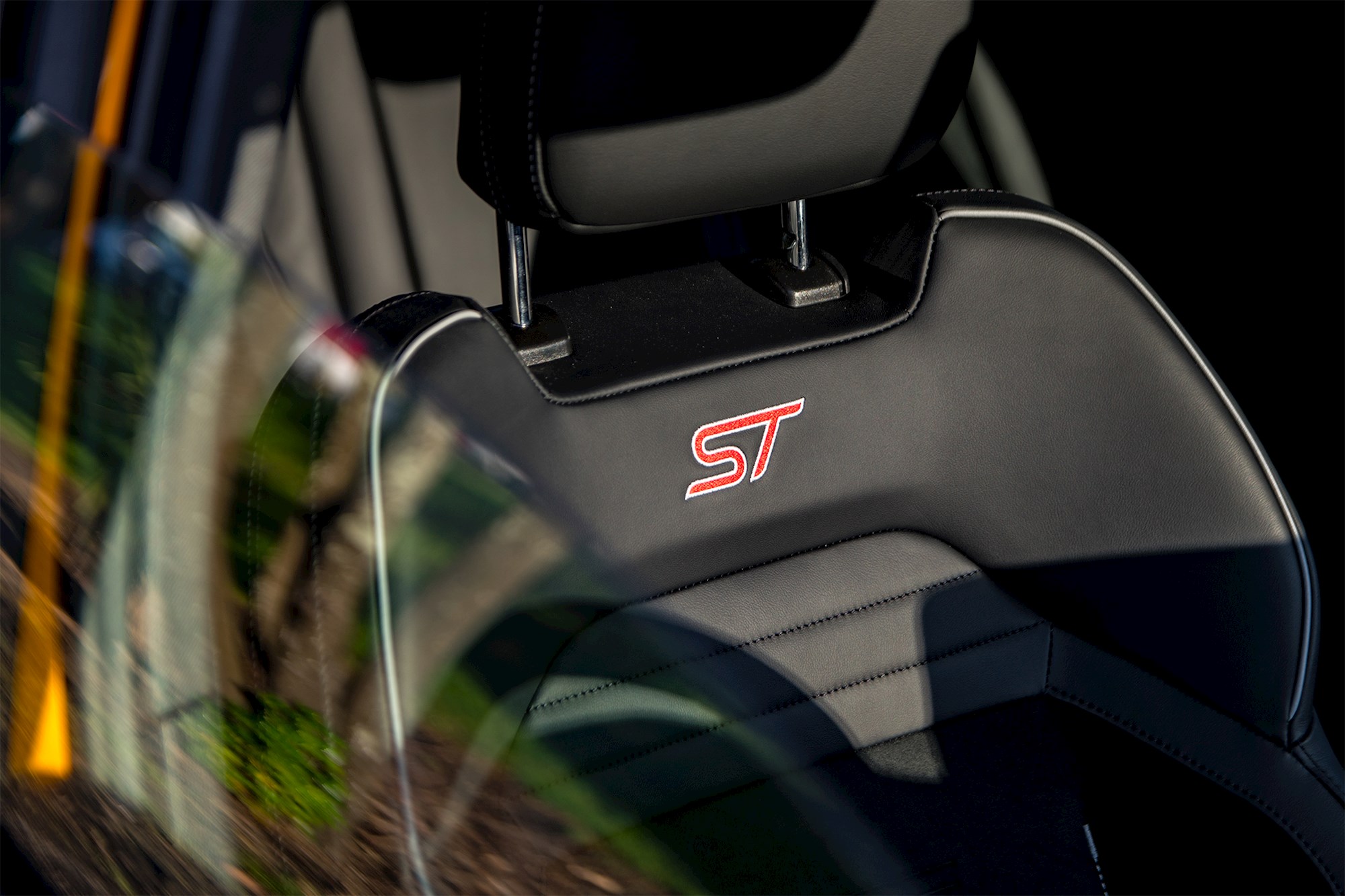
Unlike the RS though, the ST isn’t always a dedicated battle-hardened monster. Ford has done an exceptional job in giving the car soft limits at low speed. Even on its Michelin Pilot Sport 4 rubber, the nose still enjoys occasionally wandering around on power, with outright wheel-spin never too far behind.
Not that it’s a simple car mechanically or anything. Ford has given the ST triple-lube shocks capable of adjusting to the road surface ever two milliseconds, and an electronically controlled limited-slip differential.
It feels like the engineers have tuned all these elements to emphasise engagement and toothy dumb grins instead of split times. You can’t drive hard with an elbow on the windowsill. The fast Ford demands a fair chunk of your attention, and that’s how hot hatches should be.
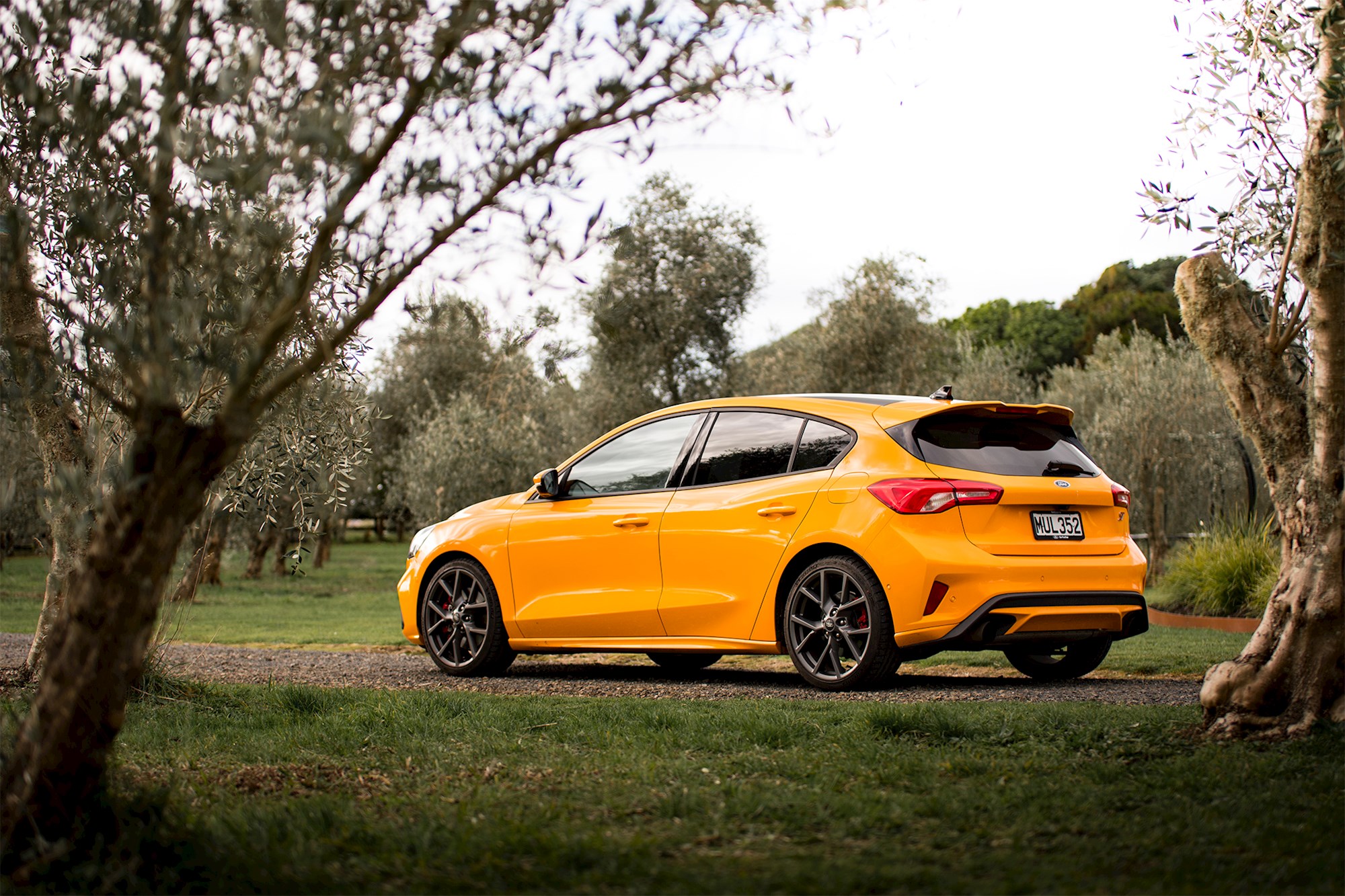
The Focus’ front end is its biggest strength. The amount of off-centre turn is incredible, and gives the ST a fluid lightness that nothing else in the class can really match — especially in an age where rivals are moving more towards torque-vectoring this and four-wheel steering that.
I wish it rode bumps better. The ride is up there with the stiffest in the game, regardless of drive mode. You forget about it when romping from apex to apex (where it eliminates next to all body roll), but around sleepy suburbs it reacts poorly to surface changes, speed bumps, and the like.
And, even if it did ride better, the ST unfortunately doesn’t come with the ability to mix and match drive modes. A Hyundai i30 N can be driven with its engine in full all-noise mumbo and its damping in ‘put the baby to sleep’ soft, but not the case here. You’re stuck with full sport mode, full race mode, and full normal.
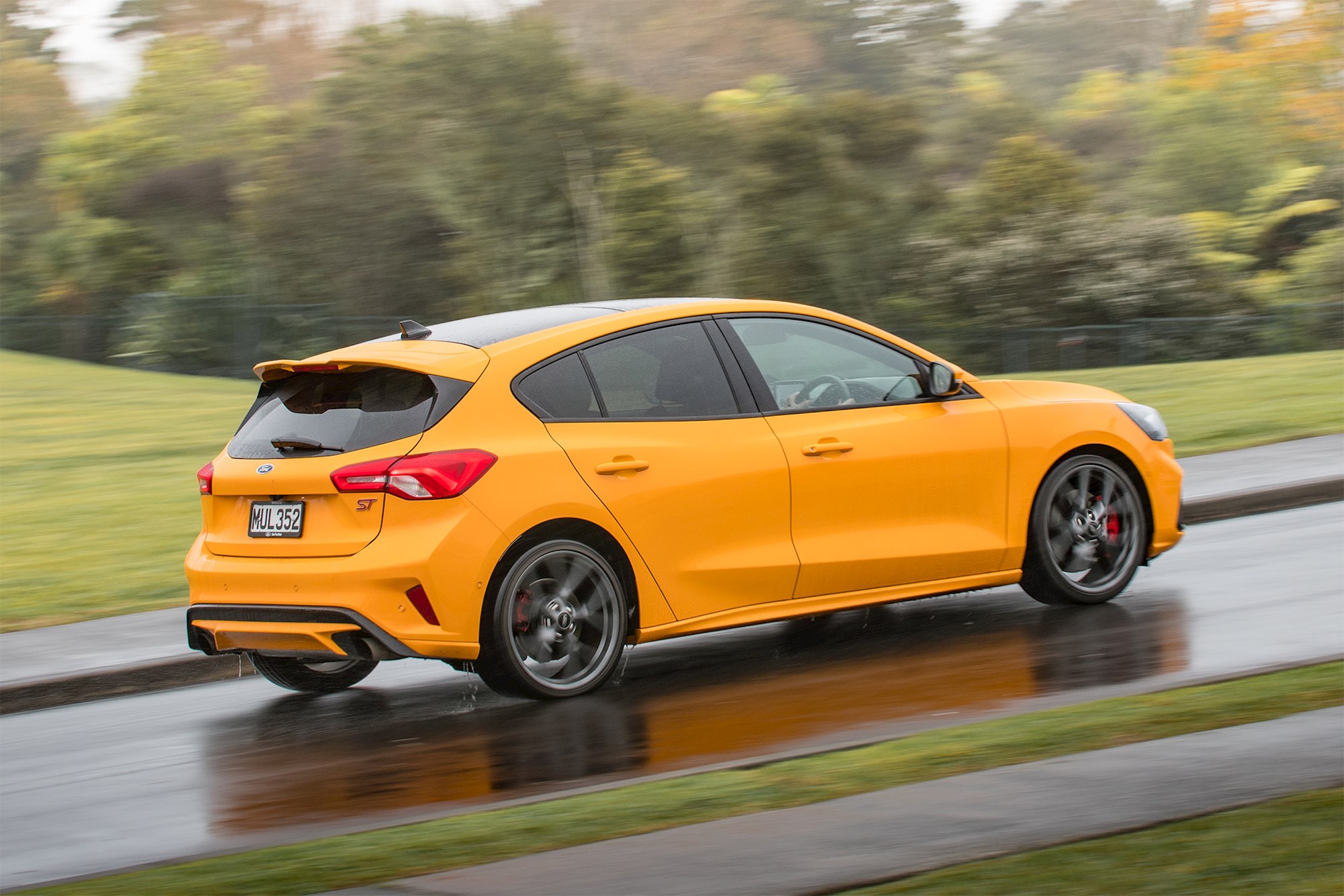
Where does all this leave the ST, then?
Well, it at least equals the i30 N for charm — a manual would probably push it over the line. Fundamentally, it feels as quick as the Type R on everyday roads while almost equaling its trademark Honda practicality. The Megane RS by contrast is much prettier, but feels sterile by comparison.
I’d argue that none of these is the Focus’ most compelling rival. That honour goes to its other hot hatch cousin; the Fiesta ST.
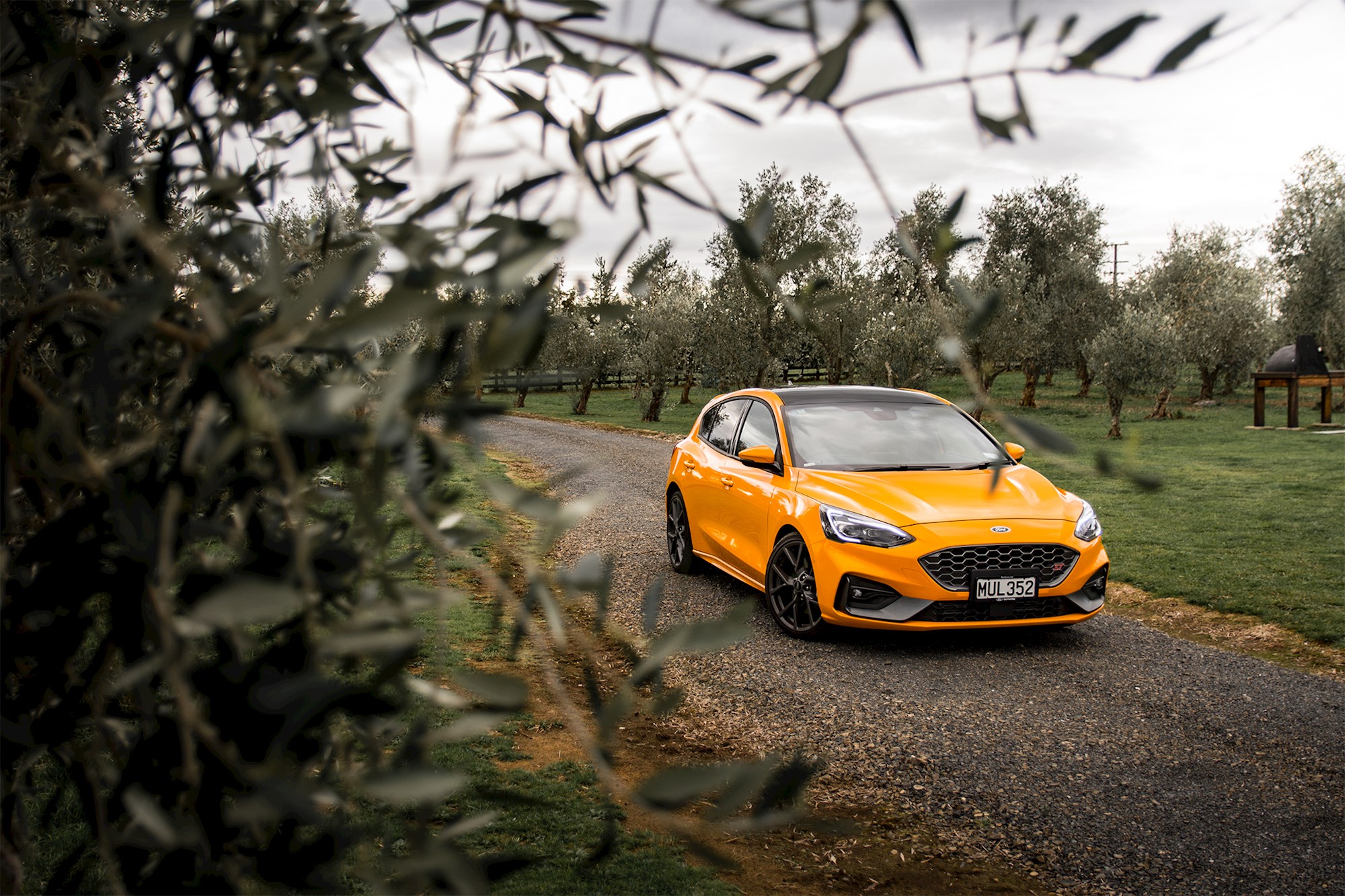
The RS might be dead, but that doesn’t mean sibling rivalry at Ford is dead too. The two STs have many similar traits; interesting engines and wonderful chassis included. So making one exclusively automatic and the other exclusively manual looks and feels deliberate — like a lab experiment where one mouse is fed cheese and the other gets genetic modifications.
The Focus ST isn’t really a Focus RS replacement. It’s something better … reasonably refined when you want it to be, rough around the edges and challenging when you don’t.























